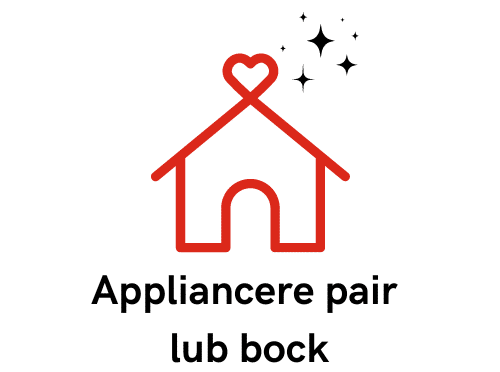What are the effective methods for insulating a garage converted into a living space in Cardiff?

In the heart of Cardiff, the trend of garage conversions has taken root. Many homeowners are choosing this route as a way of acquiring additional living space. This transformation from a car storage area into a comfortable, habitable room, however, is not as simple as it seems. One crucial aspect involves insulating the garage. Adequate insulation ensures a warm, cosy environment, vital for the often chilly Welsh climate. This article explores the effective methods of insulating a garage that's been modified into a living space. This piece extensively covers the insulating process, focusing on the roof, floor, garage door, and the broader planning involved in this renovation work.
Choosing the Right Insulation Material
In the process of transforming your Cardiff garage into a cosy living space, it's essential to choose the right insulation material. There is a wide variety of insulation materials available in the market, each with its own unique properties, advantages, and disadvantages.
A lire également : How can you implement an automatic irrigation system in a London balcony garden?
Mineral wool, for instance, is a popular choice due to its excellent thermal and sound insulation properties. It's also resistant to fire, making it a safe option. Spray foam is another excellent choice, particularly for irregular spaces and openings, thanks to its ability to expand and fill up cavities. It offers excellent thermal insulation and air sealing properties. Rigid foam boards offer better insulation per inch than most other materials, making them ideal for insulating garage walls.
In making the decision, factors to consider include the local climate, energy efficiency goals, budget, and the specific areas of the garage to be insulated.
A lire en complément : How do you create a luxury spa bathroom in a small space in a Brighton home?
Insulating the Garage Door
The garage door presents a unique challenge in the insulation process. Being a large, often flat, and mobile structure, it requires careful attention and planning to effectively insulate.
One effective method involves using insulation kits specifically designed for garage doors. These kits usually come with panels made from either polystyrene or polyurethane. These panels are cut to size and fitted into the sections on the back of the garage door. It's best to choose a kit with a high R-value (a measure of thermal resistance) to ensure maximum energy efficiency.
Another approach is to apply a layer of foam board insulation, followed by a layer of weather-resistant material on the outer side. This not only insulates the door but also protects the insulation from the elements.
Roof and Floor Insulation
The roof and the floor are key areas to insulate for maximum energy efficiency. One popular method of roof insulation involves filling the space between the roof rafters with insulating material such as mineral wool. This is then covered with insulating plasterboard to provide a flat, join-free finish.
On the other hand, floor insulation in a converted garage can be achieved by fixing insulation boards to the floor, filling any gaps with expanding foam insulation for airtightness. A layer of plywood is then added on top, offering a good base for whatever floor finish you choose.
Building Regulations and Planning
When converting a garage into a living space in Cardiff, it's crucial to adhere to building regulations and planning permissions. The approval process ensures the conversion is safe, structurally sound, and energy-efficient.
As a member of the planning team, you'll be required to submit detailed plans showing the proposed changes, including how you plan to insulate the garage. It's advisable to engage a professional building inspector to guide you through the process and help ensure compliance with all regulations.
Employing a Professional Team
Insulating a garage conversion in Cardiff can be a complex task. It's not just about slapping on some insulation and calling it a day. It requires careful planning, a thorough understanding of building regulations, and a good deal of finespaceace-consuming work.
Employing a professional team can help ensure all these aspects are properly handled. These professionals have the expertise to select the best insulation material for your garage, apply it correctly, and ensure the entire conversion complies with local building regulations. They will also help you plan the project, assisting you in making crucial decisions along the way.
Remember, a properly insulated garage conversion not only provides a comfortable living space but also significantly improves energy efficiency, leading to lower heating bills over time. It's a worthy investment that adds significant value to your home.
Wall Insulation Approaches
Converting a garage into a living area requires keen attention to every detail, including the walls. When insulating garage walls, you have a few options. The one you choose wholly depends on the structure of your garage, your budget, and the level of insulation required.
The cavity wall insulation method is suitable if you have a double-wall garage. Here, insulating material is injected into the gap between the inner and outer wall. This significantly reduces the amount of heat escaping through the walls. Mineral wool or expanding foam is commonly used for this purpose.
Another method is internal wall insulation, which involves fixing insulating panels to the inside of the garage walls. This is followed by a layer of plasterboard for a smooth finish. You can either choose rigid foam boards or mineral wool, depending on your insulation needs.
Lastly, there's external wall insulation, which involves adding an insulating layer to the outside of the garage walls, followed by a weather-resistant cladding. This method is advantageous as it doesn't reduce the internal living space. However, it may require planning permission, so check with your local building control team to avoid any legal issues.
Acquiring Planning Permission
Before setting out to convert your garage into a living space, you must check if you require planning permission. Indeed, this is a crucial step, especially in Cardiff, where building regulations are strict.
For minor conversions, like turning a garage into a home office, planning permission may not be necessary. For more extensive conversions, such as turning a double garage into a flat, you may need planning permission. In addition, if your house is listed or located in a conservation area, you will need permission even for minor works.
To acquire planning permission, you should submit detailed plans of your garage conversion to the local planning authority. These should include the proposed changes, type of insulation to be used, and how the conversion will meet energy efficiency goals.
It's worth noting that planning permission is different from building control approval. The latter focuses more on the safety, durability, and energy efficiency of the conversion. So, even if you don't need planning permission, you will still need building control approval.
Conclusion
Converting a garage into a living space is a cost-effective way of adding extra space to a home, particularly in the bustling city of Cardiff. Key to this conversion is the insulation process, which not only provides a snug living area but also enhances energy efficiency, thereby lowering heating bills in the long run.
Whether you choose mineral wool, spray foam, or rigid foam boards as your insulation material, the key is to ensure comprehensive coverage, from the garage door to the roof, walls, and floor. Moreover, while the DIY approach may seem enticing, hiring a professional team can offer invaluable help, from selecting the right insulation to ensuring compliance with building regulations.
Finally, remember to check if you require planning permission for your garage conversion. This step helps avoid legal headaches later on. With careful planning, your converted garage will soon become a cosy, warm living space that adds significant value to your home.
